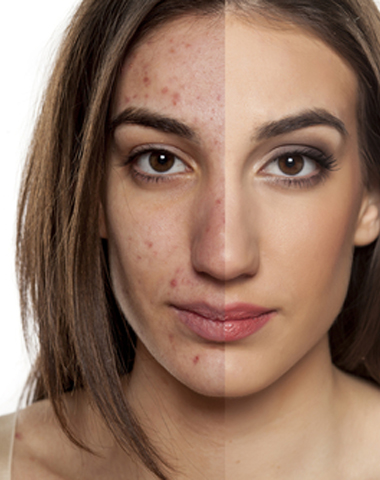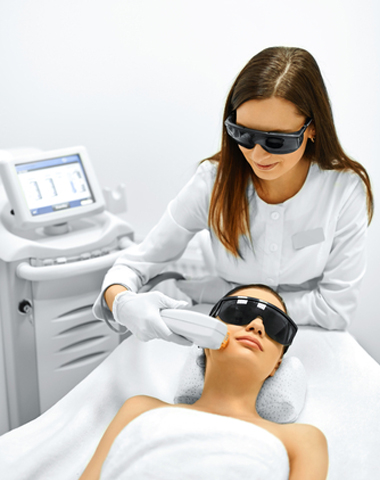It is no secret that the climate, temperature, and atmosphere have an impact on your skin. While summer is your opportunity to bare it all – with sunscreen, of course – winter is the season of covering up. At Rao Dermatology, we want you to cover up with a purpose; allow your skin to get its best care while in hibernation. As such, we’ve combined a list of protective techniques to ensure that when spring rolls back around, your skin’s glow will be noticeable and healthy.
up. At Rao Dermatology, we want you to cover up with a purpose; allow your skin to get its best care while in hibernation. As such, we’ve combined a list of protective techniques to ensure that when spring rolls back around, your skin’s glow will be noticeable and healthy.
- Speak with your dermatologist
One of the first, and perhaps most impactful, things you can do for your skin as the dryness of winter embarks, is to book an appointment with your dermatologist. Why? Far too often you ‘treat’ your skin without an understanding of the exact care it needs. Your dermatologist can assess your skin type and inform you on the correct products & regimens that will prove beneficial. For example, if you have oily skin and you apply products that are for individuals with dry skin, you will be disappointed with the outcome of your winter application.
- Hydrate
Water consumption typically decreases during winter because of the temperature drop in our weather. The sun is not necessarily beating down on you to trigger your thirst. Try to be intentional about consuming your eight glasses of water daily. Your skin’s hydration is equally important during the winter. Hot drinks may warm your bones, but water will sooth your skin and overall health.
- Test the air quality in your home
You’re ready to turn up the heat in your home and crank the fireplace to keep warm. What about fresh air? If you need to maintain moisture in the air, invest in a humidifier. Place the unit in a central location or purchase small units and distribute them evenly around your home to prevent your skin from drying out.
- Moisturize
We cannot emphasize enough how crucial it is to moisturize. Don’t limit your moisturizing as a home activity. Carry lotion in your bag; keep one moisturizer at work and one in the car. Winter easily sucks the life out of your skin, so you’ll have to be responsible for putting putting life back into it. Exfoliate regularly and use natural oils such as coconut, shea butter, and avocado to keep your skin moist and refreshed.

 like to reduce the risk of premature aging, aim to eliminate the following risk factors.
like to reduce the risk of premature aging, aim to eliminate the following risk factors. the Food and Drug Administration in 2013, 20ThermiRF is a radioactive frequency that implements a cannula “to target the dermal and subdermal planes and enables more precise dual monitoring of the external and internal tissue temperature” (Pritzker and Robinson) to tighten the skin and reduce wrinkles. Typically, there are five procedures; namely, Thermitight, Thermismooth, ThermiRase, ThermiVA, and ThermiDry. Each treatment has their respective differences. While ThermiRF is popular for its minimal downtime, insignificant discomfort, and minimal risk of injury and results, it is the procedure itself that intrigues clients.
the Food and Drug Administration in 2013, 20ThermiRF is a radioactive frequency that implements a cannula “to target the dermal and subdermal planes and enables more precise dual monitoring of the external and internal tissue temperature” (Pritzker and Robinson) to tighten the skin and reduce wrinkles. Typically, there are five procedures; namely, Thermitight, Thermismooth, ThermiRase, ThermiVA, and ThermiDry. Each treatment has their respective differences. While ThermiRF is popular for its minimal downtime, insignificant discomfort, and minimal risk of injury and results, it is the procedure itself that intrigues clients. never fails to show up, is acne. There is simply no time for that! Let’s face it: Acne is an inconvenience. Fortunately, you can conveniently get rid of it using natural remedies. Keep in mind that everyone’s skin is different and while these remedies may yield results for some, others may require further dermatological advice. What occurs on the outside of your skin is quite often a reflection of what’s going on on the inside. All individuals can benefit from adopting a healthy diet and lifestyle.
never fails to show up, is acne. There is simply no time for that! Let’s face it: Acne is an inconvenience. Fortunately, you can conveniently get rid of it using natural remedies. Keep in mind that everyone’s skin is different and while these remedies may yield results for some, others may require further dermatological advice. What occurs on the outside of your skin is quite often a reflection of what’s going on on the inside. All individuals can benefit from adopting a healthy diet and lifestyle. of them. At Rao Derm, we want to keep your anxiety to a minimum and your confidence, optimal. As a result, we have compiled a small list of simple solutions that can rid your skin of red spots.
of them. At Rao Derm, we want to keep your anxiety to a minimum and your confidence, optimal. As a result, we have compiled a small list of simple solutions that can rid your skin of red spots. common cosmetic surgery procedures among women. Following surgery, the primary concern for patients’ is whether or not the fat will come back. This question is certainly warranted. When you’ve invested in a procedure you want to ensure that the results have longevity.
common cosmetic surgery procedures among women. Following surgery, the primary concern for patients’ is whether or not the fat will come back. This question is certainly warranted. When you’ve invested in a procedure you want to ensure that the results have longevity. result in skin disposition. One of the most challenging of these is damage that affects your skin’s pigmentation. Dermatologists can attest to the difficulty that persists when clients are battling pigmentation issues. One of the most reliable treatments for tackling same is Intense Pulse light treatment. Both women and men have consistently turned to IPL treatment rather than exhausting their resources on less effective methods. So, what is IPL and is it for you?
result in skin disposition. One of the most challenging of these is damage that affects your skin’s pigmentation. Dermatologists can attest to the difficulty that persists when clients are battling pigmentation issues. One of the most reliable treatments for tackling same is Intense Pulse light treatment. Both women and men have consistently turned to IPL treatment rather than exhausting their resources on less effective methods. So, what is IPL and is it for you? These things are natural to your encounter with the changing seasons, but so are cold sores. They are simply unwelcomed accessories. Cold sores can ruin any outfit and become the centerpiece of an important conversation. At Rao Dermatology, we want to keep the attention on you not your sore. Consequently, this brief article will discuss the nature of cold sores and your best strategy for combating their existence.
These things are natural to your encounter with the changing seasons, but so are cold sores. They are simply unwelcomed accessories. Cold sores can ruin any outfit and become the centerpiece of an important conversation. At Rao Dermatology, we want to keep the attention on you not your sore. Consequently, this brief article will discuss the nature of cold sores and your best strategy for combating their existence. Understanding skin reactivity can be very useful to finding the right tool to defend against its downfalls.
Understanding skin reactivity can be very useful to finding the right tool to defend against its downfalls. beneficial) skin types on the label in order to optimize the effects of the product. What consumers are less aware of however, are the categories of skin conditions. While some people may identify with these categories unknowingly, there is very little awareness that these distinctions exist. We’ve listed the five skin conditions to help you become more familiar with your category.
beneficial) skin types on the label in order to optimize the effects of the product. What consumers are less aware of however, are the categories of skin conditions. While some people may identify with these categories unknowingly, there is very little awareness that these distinctions exist. We’ve listed the five skin conditions to help you become more familiar with your category.
